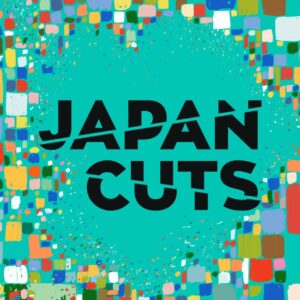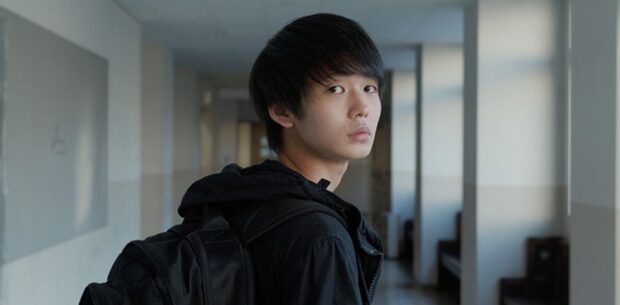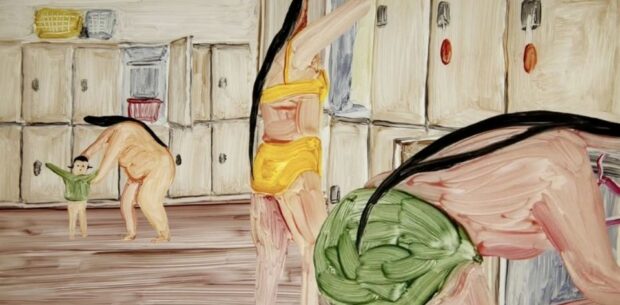There are 42 titles on this year’s JAPAN CUTS program. Here’s a few of our choice picks.

It’s been a hell of a year so far, hasn’t it? Thankfully, some calendar staples have returned to bring some joy into our isolated lives.
JAPAN CUTS is coming back from 17 to 30 July as an online film festival. As announced earlier in the month, it will open with Special Actors from One Cut of the Dead director Shinichiro Ueda.
This year also add the Next Generation competition and Obayashi Prize in honor of the late filmmaker Nobuhiko Obayashi who died in April at the age of 82.
As the sessions quickly sell out, we’ve put together a Top 11 list of films to see at the event. A full list of film and tickets are available at The Japan Society site. Be sure to check back here at The Reel Bits for review coverage. (Check out our coverage of the 2019 Festival right here).

Special Actors スペシャルアクターズ
Sure, picking the ‘opening night’ film seems a little obvious. Yet when it’s the latest film from director Shinichiro Ueda, who helmed the cult smash One Cut of the Dead, you tend to pay attention. Filled with a cast of mostly unknowns, expect meta twists on the genre film. The Opening Night has a special Q&A with the director online.

Labyrinth of Cinema 海辺の映画館 キネマの玉手箱
Nobuhiko Obayashi, best known for Hausu (1977) and The Girl Who Leapt Through Time (1983), defied all odds in making this film. Production started on this after he was diagnosed with stage-four terminal cancer, during which time he completed this and his previous film Hanagatami. That’s dedication. A love-letter to cinema, it’s a hell of a way to end a remarkable career.

Reiwa Uprising れいわ一揆
The BFI recently named Kazuo Hara’s The Emperor’s Naked Army Marches On (1987) one of the best Japanese films of the last century. His latest epic 4-hour documentary follows everyday people banding together as the Reiwa Shinsengumi party to address injustice in contemporary Japan. Party candidates include transgender Tokyo University professor Ayumi Yasutomi and disabled politicians Yasuhiko Funago and Eiko Kimura. A timely piece if ever there was one.

On-Gaku: Our Sound 音楽
Originally launched as a crowd-funded project in 2012 by diretcor Kenji Iwaizawa, it’s an adaptation of the manga by Hiroyuki Osashi. Featuring a whopping 40,000 hand-drawn frames completed over a seven year period (!), the rotoscoped concert footage took out the top prize at the 43rd Ottawa International Animation Film Festival as well as the music prize at 60th Annecy International Animated Film Festival. After all, it features Shintaro Sakamoto as the lead singer.

Fukushima 50
Almost a decade after the tragic 3.11 disaster in Fukushima, the ripple effects are still being felt all across Japan. Based on Ryusho Kadota’s book On the Brink and directed by Setsuro Wakamatsu, this is the inevitable blockbuster release that takes place over 5 days from March 11 to March 15, 2011. (Which is four days more than Wakamatsu’s previous film, Aircraft Carrier Ibuki). How big is this? Well, it has Koichi Sato and Ken Watanabe in it.

It Feels So Good 火口のふたり
Some of the many impacts of Fukushima were economic, including the underemployment depicted in Haruhiko Arai’s film. Based on the novel of the same name by Kazufumi Shiraishi, and “meditating on a painting by Miho Ninagawa,” it’s a single night of erotic romance led by a powerhouse and award-winning performance from Kumi Takiuchi (Side Job). It also took out the top slots in this year’s Kinema Junpo Award, the Eiga Geijutsu magazine poll, and the 41st Yokohama Film Festival, so this must-see really is a must-see.

Sacrifice サクリファイス
For a very different take on the 3.11 tragedies, Taku Tsuboi’s debut explores college student Midori’s (Michiko Gomi) powers of premonition. Having predicted the 2011 Great East Japan Earthquake while involved in a doomsday cult, the rest of the official description includes such provocative phrases as “brooding mystery,” “cyclical nature of violence” and “a string of disturbing cat killings.” As opposed to those everyday kind? One to watch out for.

The Murders of Osio ある殺人、落葉のころに
Takuya Misawa’s Osaka Asian Film Festival winning follow-up to Chigasaki Story is a rare Hong Kong-Japan collaboration made without funding from Mainland China. It explores the bond between four friends, murder in a small town and a tension that you know is just waiting to uncoil.

My Sweet Grappa Remedies 甘いお酒でうがい
As the follow-up to her Audience Award-winning film Tremble All You Want (at the Tokyo International Film Festival), Akiko Ohku’s latest film is sure to have a ready-made audience. Based on the novel by Jiro, it is said to reflect on the essentials: “bicycles and seasonal alcohol consumption in quiet contentment of 40-something single life working in a small publishing office.” If ever there was a film for 2020, this is it.

Wolf’s Calling 狼煙が呼ぶ
You have to love a film where the director’s note is “turn up the volume!” Reportedly inspired by Toshiaki Toyoda’s (The Miracle of Crybaby Shottan, 9 Souls) arrest for possession of a handgun, it stars Kiyohiko Shubuka and Ryuhei Matsuda and has a cracking soundtrack from the 20-person Edo punk band Seppuku Pistols. In the absence of a cinema, we’ll just have to buy a soundbar. It’s one of a dozen short films playing at the festival that you can rent in various bundles.

Experimental Spotlight
This is a cheat because it’s actually three films. You can watch the whole lot as a package. If they are anything like last year’s picks, we’re in for some mind trips again. From Mizuki Kiyama’s short animation on painted glass Bath House of Whales, to the avant-garde films Fuel and Blind Bombing, Filmed by a Bat, these all challenge the idea of what cinema can be.
You can follow along here with all our JAPAN CUTS 2020 coverage. Don’t forget to check out our coverage of the JAPAN CUTS 2018 and JAPAN CUTS 2019 festivals, and our ongoing Asia in Focus section.
Ticket packages for films, talks and events are now all available on the JAPAN CUTS website. Films start screening from 17 July 2020.
Read more coverage of Japanese films from the silent era to festivals and other contemporary releases. Plus go beyond Japan with more film from Asia in Focus.





